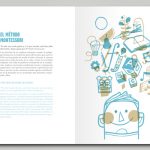This post features the children’s exhibition program at the Ipswich Art Gallery, Australia.
From 2011-2015 I worked as a children’s curator at the Ipswich Art Gallery in Queensland, Australia. The Ipswich Art Gallery is a special place for children’s creative learning with a well established program for young children and their families.
The city of Ipswich is home to a very diverse and predominantly low socio-economic community. The art gallery is currently one of the most visited in regional Australia. In my travels around the world, I have never come across anything quite like it.
Over the past 15 years, the Ipswich Art Gallery has developed and presented over 40 in-house children’s exhibitions. The children’s program is informed by a set of guiding principles that include:
- Children’s exhibitions are curated for children not adults and
- Learning begins with creative play.
The Children’s Gallery is open daily from 10am-5pm with almost all activities being free. New exhibitions are presented between every 4 – 12 weeks meaning that there are continuously new creative experiences on offer for young visitors.
The Gallery is more of a children’s art gallery than an ‘adult’ art gallery. At the same time, it is quite distinctly different from the American children’s museum movement. I often thought of each children’s exhibition as a combination of a Reggio Emilia atelier and the creativity slant of a children’s museum. Here are some examples of shows I worked on:
Wild Thing (2012)
Featuring Troy Emery’s colourful taxidermy animals and Nicole Voevodin-Cash‘s giant grassy hill, children created their own crazy costume and turned into a ‘wild things’ for some fun kinesthetic play. The exhibition also featured a dedicated play space for babies and toddlers. Free, drop-in space for families, open 10am-5pm each day.

Light Play (2013)
Children (0-8 years) used light as a creative material for making ephemeral art using overhead projectors, light boxes, shadow sculptures and reflective materials. Light Play! was presented across three different programs: a 75-minute workshops for kindergarten and early primary students, baby and toddler workshops and drop-in sessions for the general public. The exhibition was influenced by the Reggio Emilia philosophy which promotes creative play through experiential and inquiry-based learning.

Tape It! (2015)
Children (6-14 years) worked with conceptual artist Briony Barr to create collaborative ‘expandable’ drawings out of electrical tape. These sessions were run asworkshops in which children learnt about rules in art (Sol le Wit, Jim Lambie, Richard Long) and rules in nature (bifurcation, Fibonacci sequence) and how rules can be used to make unpredictable works of art. Children were then introduced to the medium of electrical tape and set a series of challenges to create 2D and 3D drawings that covered the room using rules. A video of a similar project to what was presented at Ipswich can be found here.

Construction Site (2013)
In Construction Site children unleashed their inner-engineers to design and build cubby houses using foam blocks. The 2013 iteration of the exhibition included a giant ‘Ball Run’ in which visitors used tubes and recycled materials to create tracks for balls to roll down.
Electronic Art (2015)
Children made squishy play-dough sculptures and wearable art pieces using electrical circuits and flashing LED lights. Throughout a 90-minute workshop, children were introduced to the basics of electronics and electronic art including contemporary artists using circuitry in their practice. They were then able to use conductive play dough (5-11 year olds) or textiles (11-14 year olds) to make a fun artwork to bring home. The program combined interdisciplinary skills from visual art, technology and science in a creative art-making workshop.
Further links
Piscitelli, B 2011. What’s driving children’s cultural participation in Australia?, National Museum of Australia website, viewed February 2 2016.
Piscitelli, B & Penfold, L 2015. ‘Child‐centered Practice in Museums Experiential Learning through Creative Play at the Ipswich Art Gallery’ Curator: The Museum Journal, 58 (3). P.263-280



